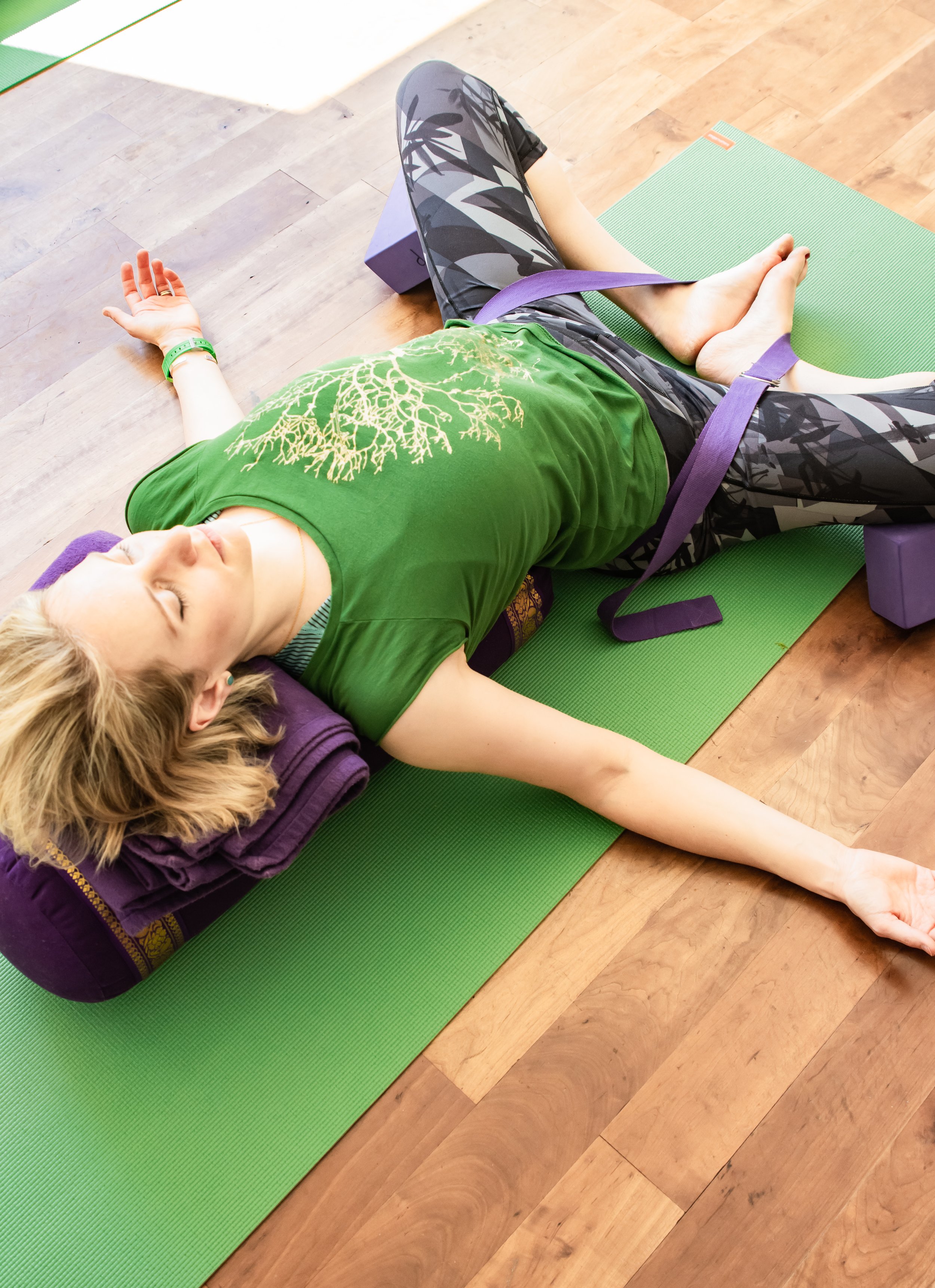Pranayama, control of the breath, is one of the eight limbs of yoga and is an essential part of Iyengar yoga. But it’s not easy to make time for it in our already-busy lives.
But so many of us are struggling with the burnout that 2022 has brought, coping with the aftershocks of a global pandemic, with the background of a war in Europe, rising energy prices and so much more
And the positive effects of pranayama are definite and not illusory. It gives relief from anxiety, stress-related diseases and everyday ailments. There are no short cuts – the only way to reap the benefits is through patient and regular practice.
How does Pranayama fit into yoga?
Pranayama is practiced side-by-side with asana practice, and while the asana practice is essential for pranayama practice, the practice of pranayama benefits our asana practice.
How? All those chest-opening poses we do in backbends expand the upper chest. All those twists we do strengthen the spinal muscles so that the lungs are supported. All those forward bends lengthen and expand the back body, and quieten the mind. All those standing poses increase stamina and help with postural alignment. And the practice of pranayama strengthens the heart and lungs leading to better poses.
While other forms of yoga rush to introduce complex pranayama practice, the Iyengar yoga method gradually introduces pranayama at a pace that allows the body to be ready for this powerful practice.
The Pranayama Practice
What exactly is pranayama? Simply put in BKS Iyengar’s words:
Pranayama is a conscious prolongation of inhalation, retention and exhalation.
The first step in any pranayama practice is awareness of the breath. By making our breathing a conscious act we start to bring our intelligence to the breath, just as the asana practice brings intelligence and awareness to the body.
For beginnners it is best to start in lying down in a supported position, otherwise the spine can start to collapse. Even just breathing normally, but with awareness, it increases your ability to focus, increases energy and softens the lungs.
Then there are many different pranayama techniques you can practice, but they all start with an exhalation breath to expel the air from the lungs.
Seated Pranayama
Once the student has practised the asanas for a good amount of time, and has done a fair amount of supine pranayama, the next stage is seated pranayama. The seated position can be cross-legged or in any comfortable position which allows the spine to lift (especially the lower spine), such as siddhasana, padmasana or virasana.
Once the seated position is established, the head is lowered towards the trunk in a position called jalandhara bandha, or ‘chin-lock’. Poses such as shoulderstand help to lengthen the neck and allow you to hold this position without stiffness in the neck. The hands rest gently on the knees. It’s important that when seated, you keep the trunk lifted so that the lungs and abdomen aren’t compressed.
Quick Pranayama Practice
If you’re like me and you find it hard to make time for a pranayama practice, try this ten-minute practice.
Lie down on your mat with the the spine and head supported, on a bolster or folded blankets. You want the head to be angled down slightly towards the chest and not thrown back.
Cover the eyes with an eye pillow or belt to relax the nervous system.
Breathe normally. Observe the flow of the inhalation and exhalation breath in and out of the nostrils.
Then work to make the breath even and steady, expanding the chest upwards and outwards at the same time.
Then gradually lengthen the exhalation breath, breathing out to the end of the breath, but keeping the mind quiet.
Continue with the above for 10 - 15 minutes. Then remove the eye covering and open the eyes gradually. Stay breathing normally before gradually getting up when you feel ready.
The Benefits of Pranayama
How can just breathing help us? In lots of ways.
The regular practice of pranayama has been found to:
Improve sleep quality
Reduce high blood pressure
Improve lung function
Enhance cognitive performance
Reduce addictive cravings
And more. So even if you just do 5 minutes before bed in the evening, try it. You have nothing to lose!

